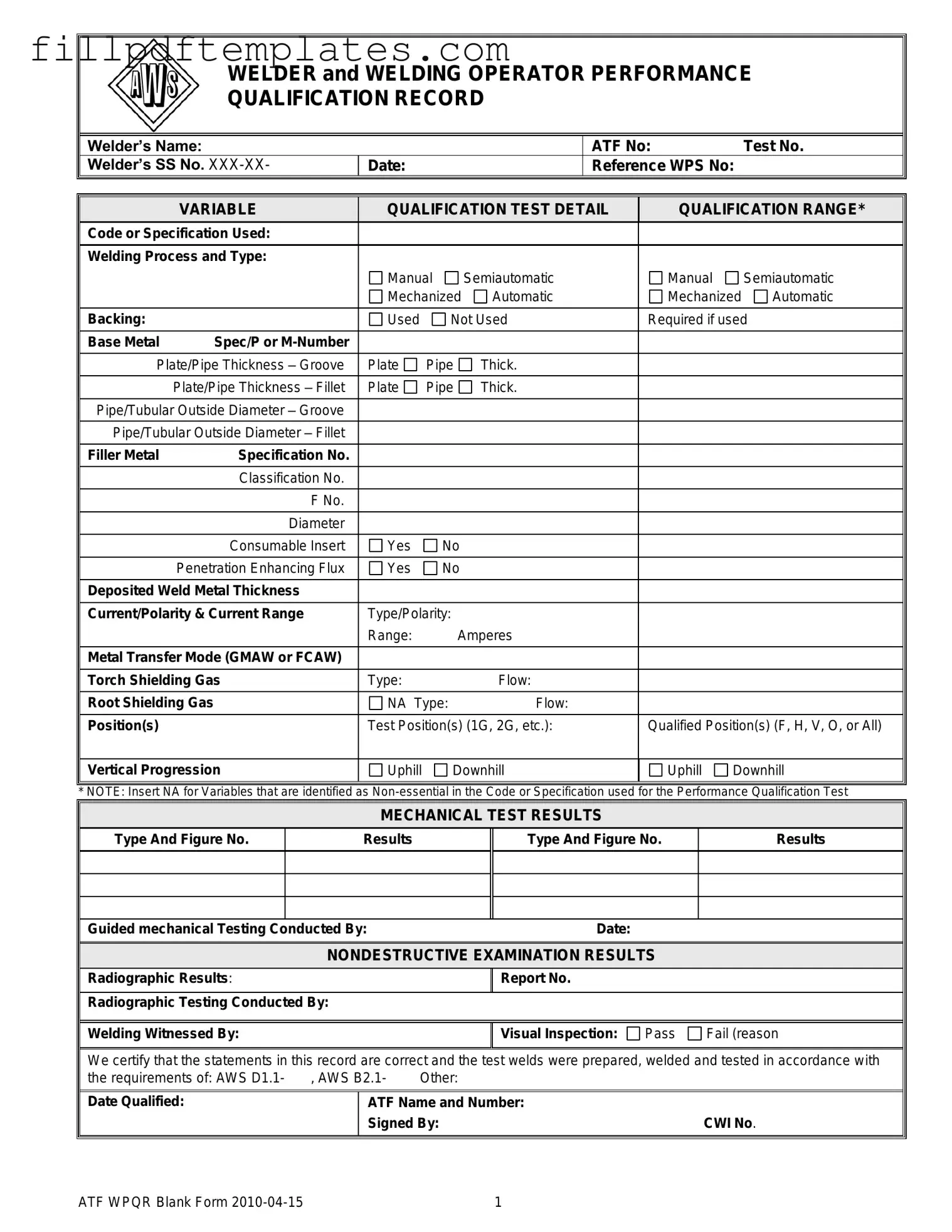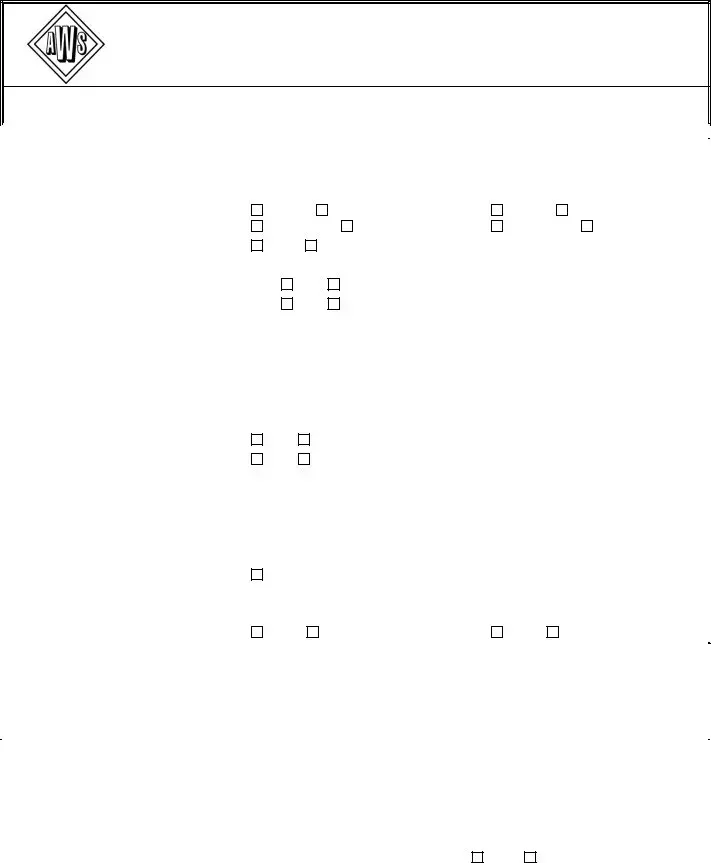Fill a Valid Welder Performance Qualification Record Template
The Welder Performance Qualification Record form is a crucial document that verifies a welder's skills and qualifications based on specific tests and standards. This record includes essential details such as the welder's name, test results, and the types of welding processes they are qualified to perform. Completing this form accurately ensures compliance with industry regulations and helps maintain high standards in welding practices.
To begin the process of documenting your qualifications, please fill out the form by clicking the button below.
Get Form

